
See how a wire carrying a current creates a magnetic field. Created by Sal Khan.
- Subject:
- Physical Science
- Physics
- Material Type:
- Lesson
- Provider:
- Khan Academy
- Provider Set:
- Khan Academy
- Author:
- Sal Khan
- Date Added:
- 08/01/2008

See how a wire carrying a current creates a magnetic field. Created by Sal Khan.
![Majors Animal [or Cellular or Plant] (BIOL 212)](https://img.oercommons.org/160x134/oercommons/media/upload/materials/screenshots/materials-course-72838.png)
This is the second in a series of majoręs biology classes covering the principles of biology. The course is an integrated study of basic concepts concerning animal biology emphasizing animal evolution, diversity, phylogeny and a comparative look at general principles of animal form and function. This course is a lab science class and students will be required to participate in weekly lab activities and document their lab work for successful course completion.
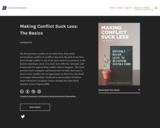
Short Description:
We all experience conflict in our daily lives, from small inconvenient conflicts to conflicts that alter the path of our lives. Even though conflict is one of the most natural occurrences in the human experience, most of us don't have effective strategies and frameworks for approaching conflict when it happens. This book provides basic strategies and frameworks for folks that want to learn to turn conflict into an opportunity in their lives that leads to stronger relationships. Produced in partnership with Boise State University’s eCampus Center through the Open Book Summer Grant Program 2020.
Word Count: 45460
(Note: This resource's metadata has been created automatically by reformatting and/or combining the information that the author initially provided as part of a bulk import process.)
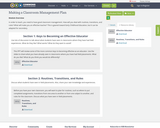
In order to teach, you need to have good classroom management. How will you deal with routines, transitions, and rules? What will make you an effective teacher? This is geared toward Early Childhood Education, but it can be adapted for secondary.
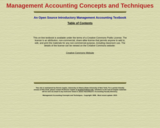
An Open Source Introductory Management Accounting Textbook
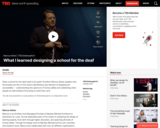
Does a school for the deaf need to be quiet? Architect Marcus Adrian explains how the answer put him on the road to identifying a key element of designing for accessibility — understanding the spectrum of human ability and celebrating what people do well instead of focusing on what they can't.

What is the “new Jim Crow”? Throughout its history, the United States has been structured by a racial caste system. From slavery to Jim Crow to mass incarceration, these forms of racialized social control reinvented themselves to meet the needs of the dominant social class according to the constraints of each era.

An open textbook for MATH502
Short Description:
A General Education textbook for mathematics.
Long Description:
Long Description – text goes here.
Word Count: 90029
(Note: This resource's metadata has been created automatically by reformatting and/or combining the information that the author initially provided as part of a bulk import process.)
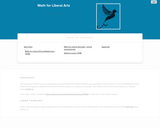
This course was originally developed for the Open Course Library project. The text used is Math in Society, edited by David Lippman, Pierce College Ft Steilacoom. Development of this book was supported, in part, by the Transition Math Project and the Open Course Library Project. Topics covered in the course include problem solving, voting theory, graph theory, growth models, finance, data collection and description, and probability.
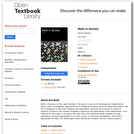
Math in Society is a free, open textbook. This book is a survey of contemporary mathematical topics, most non-algebraic, appropriate for a college-level topics course for liberal arts majors. The text is designed so that most chapters are independent, allowing the instructor to choose a selection of topics to be covered. Emphasis is placed on the applicability of the mathematics. Core material for each topic is covered in the main text, with additional depth available through exploration exercises appropriate for in-class, group, or individual investigation. This book is appropriate for Math 107 (Washington State Community Colleges common course number).
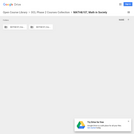
The purpose of this course is to expose you to the wider world of mathematical thinking. There are two reasons for this. First, for you to understand the power of quantitative thinking and the power of numbers in solving and dealing with real world scenarios. Secondly, for you to understand that there is more to mathematics then expressions and equations. The core course is a complete, ready to run, fully online course, featuring 9 topics: Problem solving, voting theory, graph theory, growth models, consumer finance, collecting data, describing data, probability, and historical counting. Additional optional topics are provided. The course materials can easily be used with a face-to-face course.
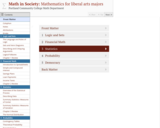
We dedicate this book to our students. May you have greater ease in paying for college and grow your proficiency and confidence in math.
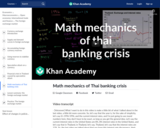
Going through the mechanics of how a Thai financial institution can lose their shirt when their currency devalues. Created by Sal Khan.
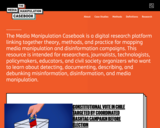
The Media Manipulation Casebook is a digital research platform linking together theory, methods, and practice for mapping media manipulation and disinformation campaigns. This resource is intended for researchers, journalists, technologists, policymakers, educators, and civil society organizers who want to learn about detecting, documenting, describing, and debunking misinformation, disinformation, and media manipulation.
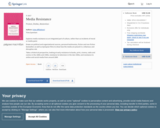
Explores media resistance as an integrated part of culture, rather than as incidents of moral or media panic. Draws on political and organizational sources, personal testimonies, fiction and non-fiction bestsellers as well as dystopian films to show how the media are placed in a villainous and disruptive role. Takes a historical perspective, looking at early resistance to books, print, cinema, radio and comics in the 1800s and 1900s; resistance to television in the late 1900s; and resistance to online and social media from around 2000.
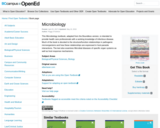
This Microbiology textbook, adapted from the Boundless version, is intended to provide health care professionals with a working knowledge of infectious disease. Much of the book is devoted to the structure/function relationships in pathogenic microorganisms and how these relationships are expressed in host-parasite interactions. The text also examines Microbial diseases of specific organ systems as well as host response mechanisms.
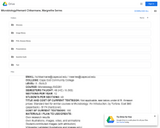
Full course in microbiology.

Microbiology is the study of microorganisms, which are defined as any microscopic organism that comprises either a single cell (unicellular), cell clusters or no cell at all (acellular). This includes eukaryotes, such as fungi and protists, and prokaryotes. Viruses and prions, though not strictly classed as living organisms, are also studied.
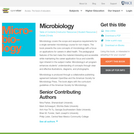
Microbiology covers the scope and sequence requirements for a single-semester microbiology course for non-majors. The book presents the core concepts of microbiology with a focus on applications for careers in allied health. The pedagogical features of the text make the material interesting and accessible while maintaining the career-application focus and scientific rigor inherent in the subject matter. Microbiology’s art program enhances students’ understanding of concepts through clear and effective illustrations, diagrams, and photographs.
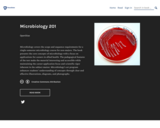
Short Description:
Microbiology covers the scope and sequence requirements for a single-semester microbiology course for non-majors. The book presents the core concepts of microbiology with a focus on applications for careers in allied health. The pedagogical features of the text make the material interesting and accessible while maintaining the career-application focus and scientific rigor inherent in the subject matter. Microbiology’s art program enhances students’ understanding of concepts through clear and effective illustrations, diagrams, and photographs.
Word Count: 239922
Included H5P activities: 4
(Note: This resource's metadata has been created automatically by reformatting and/or combining the information that the author initially provided as part of a bulk import process.)